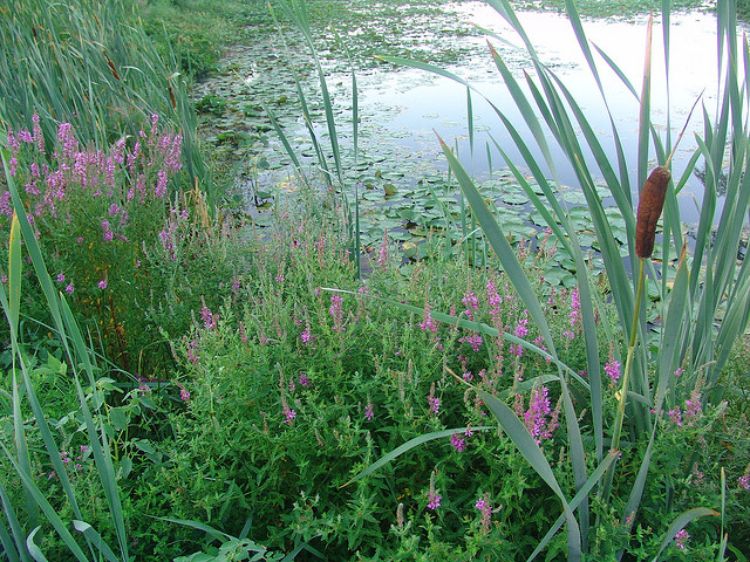The link between climate change and the spread of invasive species
Highly adaptable non-native plants have a competitive edge in a changing climate.

Invasive species represent a major threat to the health of Great Lakes ecosystems and economies. They have already inflicted hundreds of millions of dollars in damage to major industries in the Great Lakes including sport and commercial fishing, water treatment, power generation and tourism. Governments are forced to spend scarce taxpayer dollars controlling and preventing the spread of invasive species. According to the Army Corps of Engineers comprehensive prevention plans for Asian carp alone may cost between $68 million and $18 billion. The ecological costs of invasive species are just as severe. They compete with native species for resources, degrade habitat and alter food web dynamics. Michigan State University Extension and Michigan Sea Grant work with stakeholders across the state to combat invasive species.
One aspect of invasive species too often overlooked is the close tie between invasive species proliferation and climate change. Climate change is expected to alter seasonal patterns over time with much of the globe already experiencing dramatic changes in precipitation and temperature patterns. In the past hundred years the growing season across much of the United States has lengthened by an average of two weeks. Forecasters also expect more frequent and intense extreme storm events. All of these factors combine to place added stress on both native and invasive species. However, invasive species in general are much better equipped to handle these new stressors.
A large part of what makes invasive species so successful at expanding into new terrain is their ability to adapt quickly to new environments. Invasive species often reproduce faster than natives and several have added evolved traits that help them outcompete natives. For example Phragmites can adapt to fluctuating water levels and thrive in saturated soils using air spaces in its stems and rhizomes.
As climate change alters habitat conditions, invasive species are likely to adapt much more rapidly than their native counterparts. Research from the Biodiversity Centre at the University of British Columbia found the invasive species climate change link is already visible. After tracking the first flowering dates of plants in Kansas, North Dakota, Massachusetts, Washington D.C., and Britain, they found invasive species, such as purple loosestrife, have adapted to sync their flowering schedule with a longer growing season. Native species in comparison have been much slower to adapt to new seasonal patterns.
Long-term effective management of invasive species will require careful consideration of climate change impacts and the added advantages they may provide to highly adaptable non-native plants. Early detection and reporting will also be crucial. View a list of “Watch List” species in Michigan and learn how to report sightings.
Michigan Sea Grant helps to foster economic growth and protect Michigan’s coastal, Great Lakes resources through education, research and outreach. A collaborative effort of the University of Michigan and Michigan State University, Michigan Sea Grant is part of the NOAA-National Sea Grant network of 33 university-based programs.



 Print
Print Email
Email

